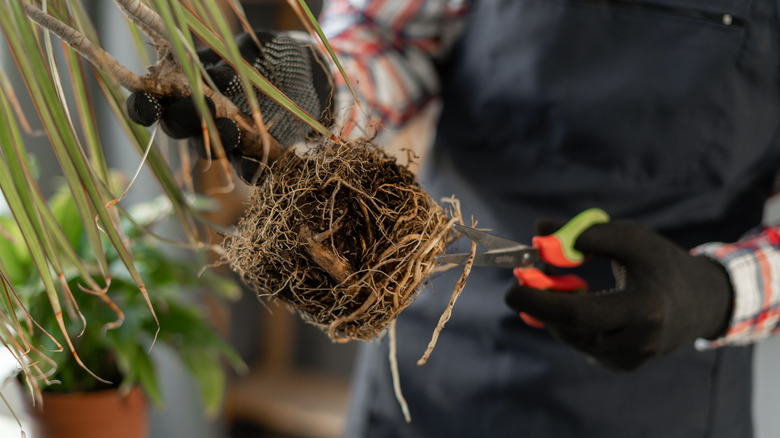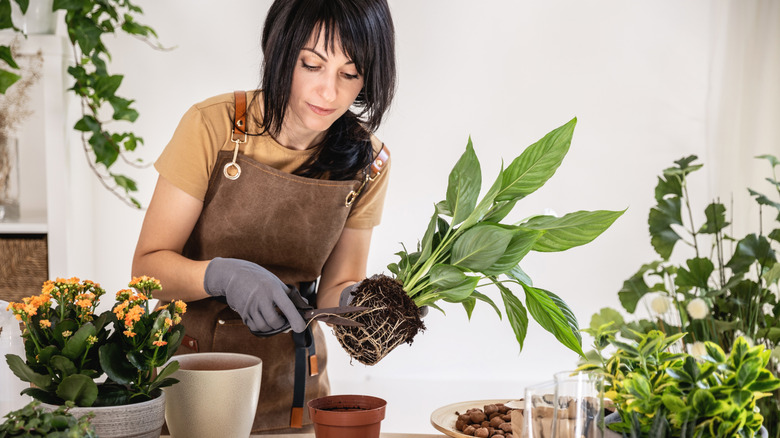What Is Root Pruning And Why Do Some Plants Need It?
Plants can't stay healthy without healthy roots. They're essential for absorbing water and nutrients and provide structure and support. Given how important roots are, you might assume that you should never take a blade to them. But that's only true as long as the roots remain in good condition. For struggling roots, it's a different story. Pruning goes a long way to revive a root-bound houseplant or treat root rot.
Root pruning involves removing parts of a plant's root. If your plant has root rot, you must cut off the affected roots, which are usually mushy, smelly, and discolored, for the plant to have a chance of bouncing back. With root-bound plants, the roots grow on top of each other in tangled circles since they have run out of room to expand. Being slightly root-bound isn't dangerous for most plants, but some roots are so severely overgrown that the plant can't effectively access water or nutrients, leading to wilting and lack of growth. That's when root pruning may be in order.
Pruning encourages new growth from the cut ends, giving the plant a chance to regrow healthy roots. It also controls the size of the plant, so you can even re-pot a root-bound plant into the same container if you like. Root pruning is safe on most houseplants and container plants, but it's riskier to prune your trees' roots without enlisting professional help.
How to prune roots for best results
First, determine whether pruning a plant's roots is necessary. For slightly rootbound plants, you can skip this procedure; massaging the roots and repotting the plant into a larger container should suffice. But if the roots are so tight that you can't work them loose, root pruning is the way forward. If big roots are wrapped around the ball, or if the roots are rotting, those also need to be trimmed.
Start by removing the plant from the pot and dusting away the soil so you can see all the roots. Then use clean pruners to cut off up to one-third of the roots. For severely root-bound plants, make a few superficial cuts into the sides of the root ball. Do not cut the taproot, if one is present. If you're pruning because of root rot, only cut off the affected parts; dispose of the leftover soil and repot in a sanitized container to avoid transferring any fungal spores. Otherwise, loosen up the remaining roots, replant in fresh soil, and water thoroughly. It may help to prune the foliage a bit as well, so the plant can focus more energy on regrowing roots.
Root pruning can save a plant in the long run, but it creates some short-term stress and vulnerability until the roots are fully regrown. It's best to avoid pruning plants in the winter or summer, when they're already subject to weather-related stress. Prune in the spring or fall instead. Root pruning is not appropriate for succulents, cacti, and plants with tubers, bulbs, and rhizomes.

